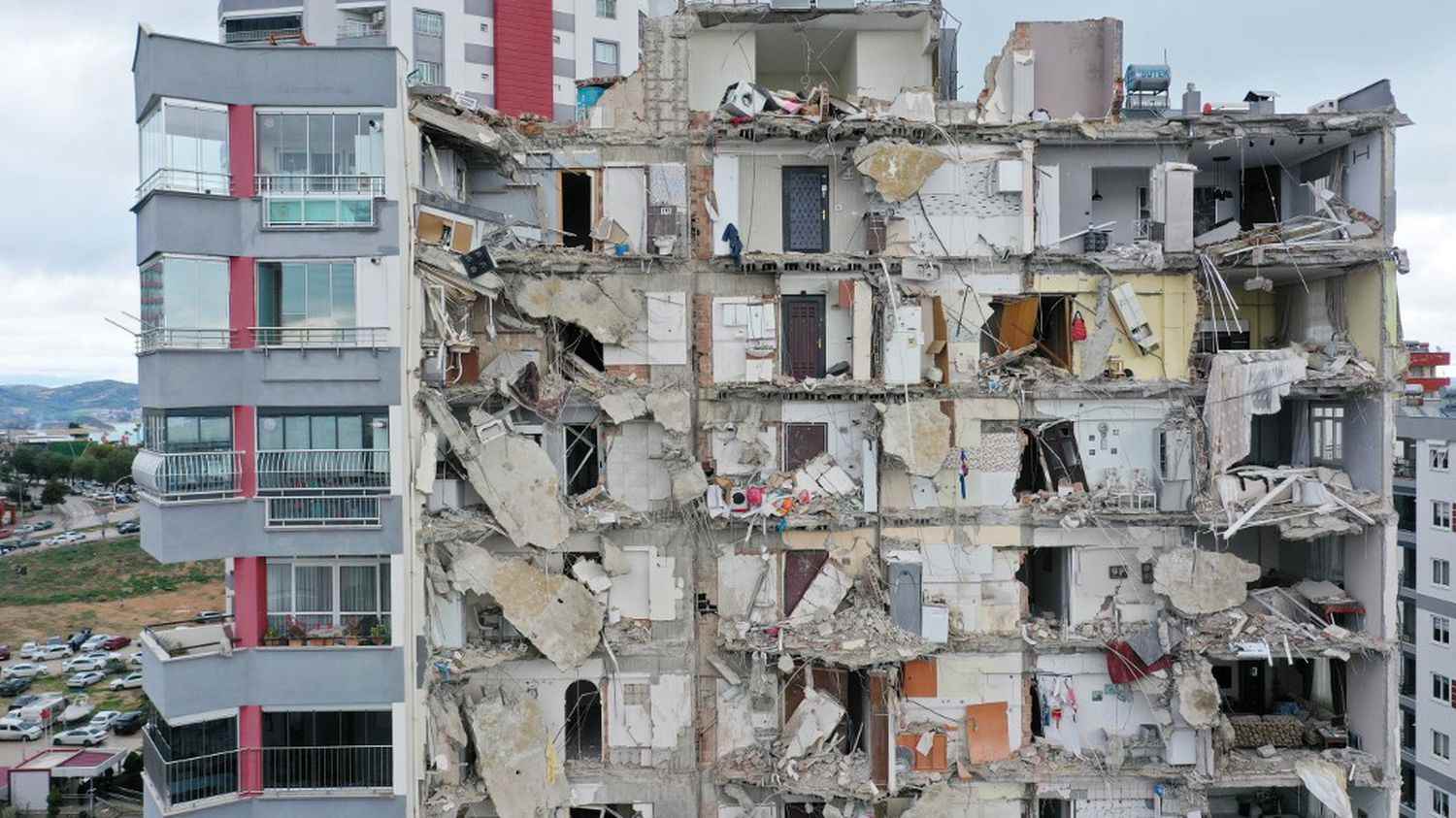The powerful tremors killed more than 5,000 people and injured nearly 25,000, according to a still provisional report by the authorities of the two countries.
“I’m used to jerks. It’s the first time I’ve seen something like this. We thought it was the apocalypse“, testifies a Turkish journalist to AFP. The earthquake, whose first tremor reached a magnitude of 7.8, occurred Monday, February 6 in the morning, devastated southeastern Turkey and northern Syria.
>> Earthquake in Turkey and Syria: follow the situation live
The earthquake and its aftershocks left more than 5,000 dead and nearly 25,000 injured in the two countries, according to reports released on Tuesday. The World Health Organization estimates that 23 million people could be affected by the tremors. Several thousand buildings have collapsed. Rescuers continued their search for survivors under the debris on Tuesday. Franceinfo explains why this earthquake caused such a disaster.
Because it is a region of the world where seismic activity is important
Turkey is located on the Anatolian tectonic plate. The earthquake itself occurred at the level of the East Anatolian fault, that is to say at the junction between the Anatolian plate and the Arabian plate, where the plates slide over each other. “Although an earthquake of this magnitude is rare anywhere in the world, this type of event is generally expected on long strike-slip faults at plate boundaries”exhibits the United States Geological Survey (content in English).
Why such intensity? “This what is important is the speed difference. The Arabian plate goes a little faster than the Anatolian plate towards the North-East, which leads to accumulations of forces at this level”detailed in The Parisian the seismologist Florent Brenguier, from the Institute of Earth Sciences, in Grenoble. Moreover, the East Anatolia fault had not experienced a tremor of such magnitude for more than two centuries, which means “that a fairly large amount of energy has been able to accumulate” at this place, analyzes Roger Musson, researcher associated with the British Geological Survey interviewed by AFP.
Because there were many strong aftershocks after the first tremor
The first tremor, which occurred in the middle of the night, was particularly strong. It reached a magnitude of 7.8 (on a scale with a maximum of 10). Just hours after the initial shock, a magnitude 7.5 aftershock occurred midday on Monday. Its epicenter was located near the Turkish town of Ekinözü, about 100 kilometers north of that of the first earthquake, as shown in the map of the United States Institute of Geological Studies.
Following the M7.8 EQ, a M7.5 aftershock struck at ~1:30 pm local time. Significant and widespread damage is likely. More aftershocks will occur. Follow @Kandilli_info for local information. https://t.co/KLLmXlfS70 https://t.co/8wyrVPRJ9J pic.twitter.com/Kh825PfB11
— USGS Earthquakes (@USGS_Quakes) February 6, 2023
This phenomenon is exceptional, believes Martin Vallée, seismologist at the Institute of Earth Physics in Paris, interviewed by BFMTV. “It happens very rarely in this context where the earthquake itself was already very strong (…) One would have thought that [le premier] earthquake, by its magnitude, releases all the stresses that had been accumulated in the earth”develops the researcher.
In addition to this second quake, no less than 184 aftershocks have been recorded since the first earthquake on Monday. But their magnitude has decreased.
Because the earthquake happened near the surface of the ground
The first earthquake was triggered at a shallow depth, about 17.9 kilometers below the surface of the ground, near the Turkish city of Gaziantep and its two million inhabitants. The second took place even closer to the surface: 10 kilometers.
“When earthquakes are relatively shallow, the intensity of the shaking is severe.”
The American Institute of Geological Studieson its website
“The majority of destructive earthquakes occur in the earth’s crust less than 15-20 km deep”confirms for its part the French Central Seismological Bureau.
Because the infrastructure was not strong enough
According to experts, the houses affected by the earthquake were not strong enough to withstand the tremors. ” In Overall, the population of this region lives in structures that are extremely vulnerable to earthquake shaking, although there are some resistant structures”says the United States Geological Survey in its report (in English) about the incident.
Side thing, the authorities count for the time being nearly 5,000 collapsed buildings. They collapsed “like pancakes”British volcanologist Bill McGuire of University College London told AFP. “This happens when the walls and the floors are not sufficiently united, each floor collapses vertically on the one below”he adds.
The number of destroyed infrastructures is not known in Syria, but it could be just as heavy. “I To infrastructure resistance is unfortunately uneven in southern Turkey and particularly in Syria”explained to AFP Carmen Solana, volcanologist at the British University of Portsmouth.
